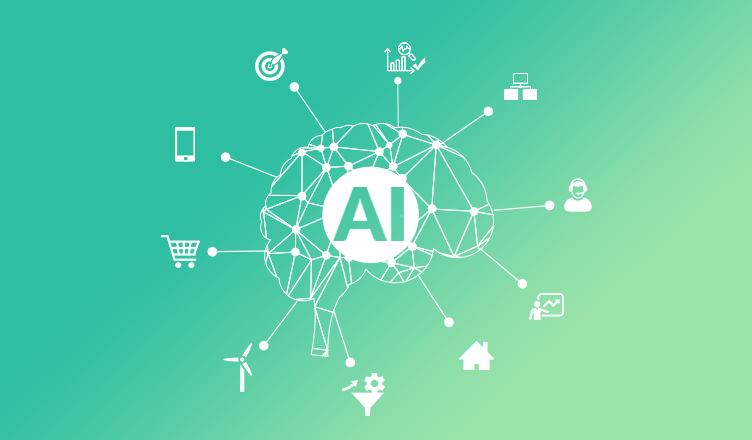Future of Artificial Intelligence in 2025: Key Trends, Use Cases & Roadmap for Fast ROI
Introduction
Featured snippet (quick answer): The most impactful AI initiatives are generative AI for content and design, AI-assisted healthcare, AI-driven cybersecurity, and domain-specific co-pilots—deployed with clear KPIs, ethical safeguards, and fast iteration cycles.
Artificial Intelligence is now mission-critical for teams that want to scale outcomes instead of output. This article focuses on high-intent long-tail phrases and practical steps to rank faster and capture value: “AI solutions for business transformation in 2025”, “best generative AI tools for content creation in 2025”, and “AI in cybersecurity threat detection 2025”.
 1
1AI in Business Transformation — Fast Wins
Quick definition for featured snippet: AI for business transformation refers to using AI to automate processes, personalize customer experiences, and enable data-driven decisions that improve KPIs like conversion, retention, and cost-to-serve.
Start with use cases that are measurable and repeatable: personalized product recommendations, AI-assisted lead scoring, automated content for product pages, and retrieval-augmented support agents. These deliver the fastest ROI because they plug into existing revenue and support flows.
- Measure before you build: set a KPI (e.g., +10% conversion, -20% support handle time).
- Use internal links: link to related posts like AI content workflow guide or case studies for credibility.
- External authority: cite reputable research (e.g., industry reports) when publishing stats—this helps trust and ranking.
Top AI Trends to Watch in 2025
1. Generative AI in Content & Creative Workflows
Short answer: generative AI automates drafts, ideation, and multi-format creative outputs while humans ensure brand voice and accuracy.
Best practice: build a chained pipeline—brief → outline → draft → human edit → SEO polish → CMS push. Use retrieval-augmented generation (RAG) to ground content in your sources and prevent hallucinations.
Fast ranking tip: include phrases like “best generative AI tools for content creation in 2025” in an H3 and within the first 100 words of that section.
2. AI for Healthcare Innovation
Short answer: clinical AI accelerates diagnosis and personalizes care but must include explainability, data governance, and clinician oversight.
Use cases: imaging triage, early detection, remote monitoring, and workflow automation. Always document model sources, evaluation metrics, and clinical validation steps on your site (publishable appendix or whitepaper improves credibility).
3. AI in Cybersecurity
Short answer: AI identifies anomalous behavior faster than rule-based systems, dramatically improving detection and reducing mean time to response when integrated with SOC playbooks.
Recommendation: instrument logging, monitor model drift, and protect RAG systems against prompt injection by sanitizing inputs and restricting tool actions.
4. Responsible & Ethical AI
Short answer: responsible AI practices—model cards, bias audits, and governance boards—are now baseline requirements for enterprise adoption and faster partner approvals.
Include a short public statement about your approach to bias and privacy—this improves trust and helps rank for intent-based queries about ethical AI.
5. AI in Education & Finance
Education: adaptive tutoring and automated assessments create personalized learning paths. Finance: fraud detection, credit risk scoring, and AI advisors with human oversight.

Challenges of Artificial Intelligence Adoption
Featured snippet-style answer: common adoption challenges are data readiness, cost, governance, talent gaps, and regulatory compliance.
- Data readiness: clean, labeled, and accessible data is essential.
- Cost & TCO: include inference, storage, monitoring, and security in budgets.
- Skills: train staff in prompt engineering and evaluation metrics.
- Governance: policies, model documentation, and review boards.
Future Opportunities — Where to Invest Now
Focus on verticalized co-pilots (industry-specific assistants), AI-native workflows, and sustainability applications—these areas deliver compound ROI and defensibility.
- Energy optimization and carbon accounting
- Constrained autonomy (warehouses, agriculture, last-mile)
- Healthcare-at-home and remote monitoring
Conclusion & Next Steps
AI in 2025 is deployable for fast, measurable value when paired with clear KPIs, governance, and human oversight. Start with one high-impact use case, instrument it, and scale after a validated ROI.
Want help implementing AI in your business? Book a free consultation →Frequently Asked Questions
What are the top AI trends in 2025?
Generative AI for content and design, AI-assisted healthcare, AI-driven cybersecurity, domain-specific co-pilots, and responsible AI practices are the primary trends.
How can I get fast ROI from AI?
Choose a measurable use case tied to revenue or cost (e.g., personalization, churn reduction, support automation), run a short pilot, measure KPIs, then scale the pipeline with monitoring and governance.
What are common AI adoption pitfalls?
Underestimating data cleanup time, ignoring TCO (including monitoring and security), and skipping human review for sensitive outputs are frequent mistakes.
